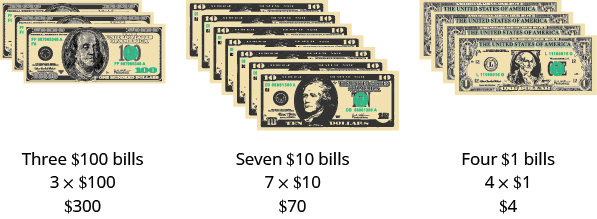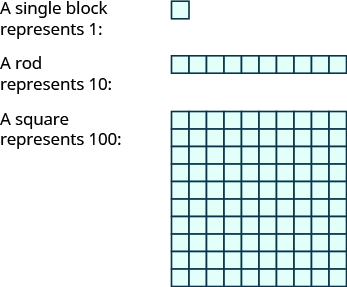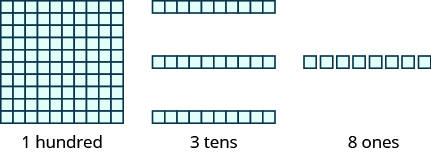-Hallo friends, Accounting Methods, in the article you read this time with the title Place Value in Whole Numbers, we have prepared this article well for you to read and retrieve the information therein.
Hopefully the content of article posts Module 1: Whole Numbers, which we write this you can understand. Alright, happy reading.
Title : Place Value in Whole Numbers
link : Place Value in Whole Numbers
Place Value in Whole Numbers
Place Value in Whole Numbers
LEARNING OBJECTIVES
- Use place value to define all digits of a whole number
Our number system is called a place value system because the value of a digit depends on its position, or place, in a number. The number 537 has a different value than the number 735. Even though they use the same digits, their value is different because of the different placement of the 3 and the 7 and the 5.
Money gives us a familiar model of place value. Suppose a wallet contains three $100 bills, seven $10 bills, and four $1 bills. The amounts are summarized in the image below. How much money is in the wallet?

Find the total value of each kind of bill, and then add to find the total. The wallet contains $374.

Base-10 blocks provide another way to model place value, as shown in the image below. The blocks can be used to represent hundreds, tens, and ones. Notice that the tens rod is made up of 10 ones, and the hundreds square is made of 10 tens, or 100 ones.

The image below shows the number 138 modeled with base-10 blocks.
We use place value notation to show the value of the number 138.


| Digit | Place value | Number | Value | Total value |
|---|---|---|---|---|
| 1 | hundreds | 1 | 100 | 100 |
| 3 | tens | 3 | 10 | 30 |
| 8 | ones | 8 | 1 | +8 |
| Sum =138 |
EXAMPLE
Use place value notation to find the value of the number modeled by the base-10 blocks shown.

Show Answer
TRY IT
By looking at money and base-10 blocks, we saw that each place in a number has a different value. A place value chart is a useful way to summarize this information. The place values are separated into groups of three, called periods. The periods are ones, thousands, millions, billions, trillions, and so on. In a written number, commas separate the periods.
Just as with the base-10 blocks, where the value of the tens rod is ten times the value of the ones block and the value of the hundreds square is ten times the tens rod, the value of each place in the place-value chart is ten times the value of the place to the right of it.
The chart below shows how the number 5,278,194 is written in a place value chart.

- The digit 5 is in the millions place. Its value is 5,000,000.
- The digit 2 is in the hundred thousands place. Its value is 200,000.
- The digit 7 is in the ten thousands place. Its value is 70,000.
- The digit 8 is in the thousands place. Its value is 8,000.
- The digit 1 is in the hundreds place. Its value is 100.
- The digit 9 is in the tens place. Its value is 90.
- The digit 4 is in the ones place. Its value is 4.
EXAMPLE
In the number 63,407,218; find the place value of each of the following digits:
- 7
- 0
- 1
- 6
- 3
Show Answer